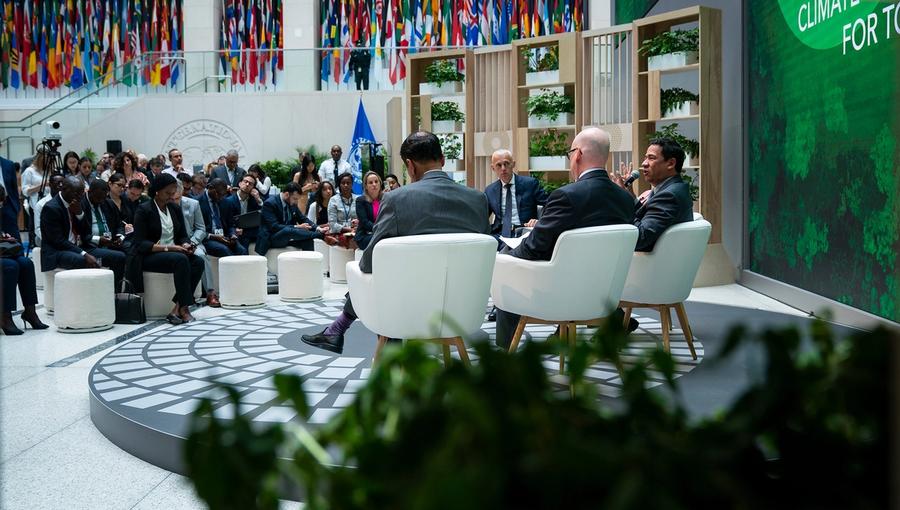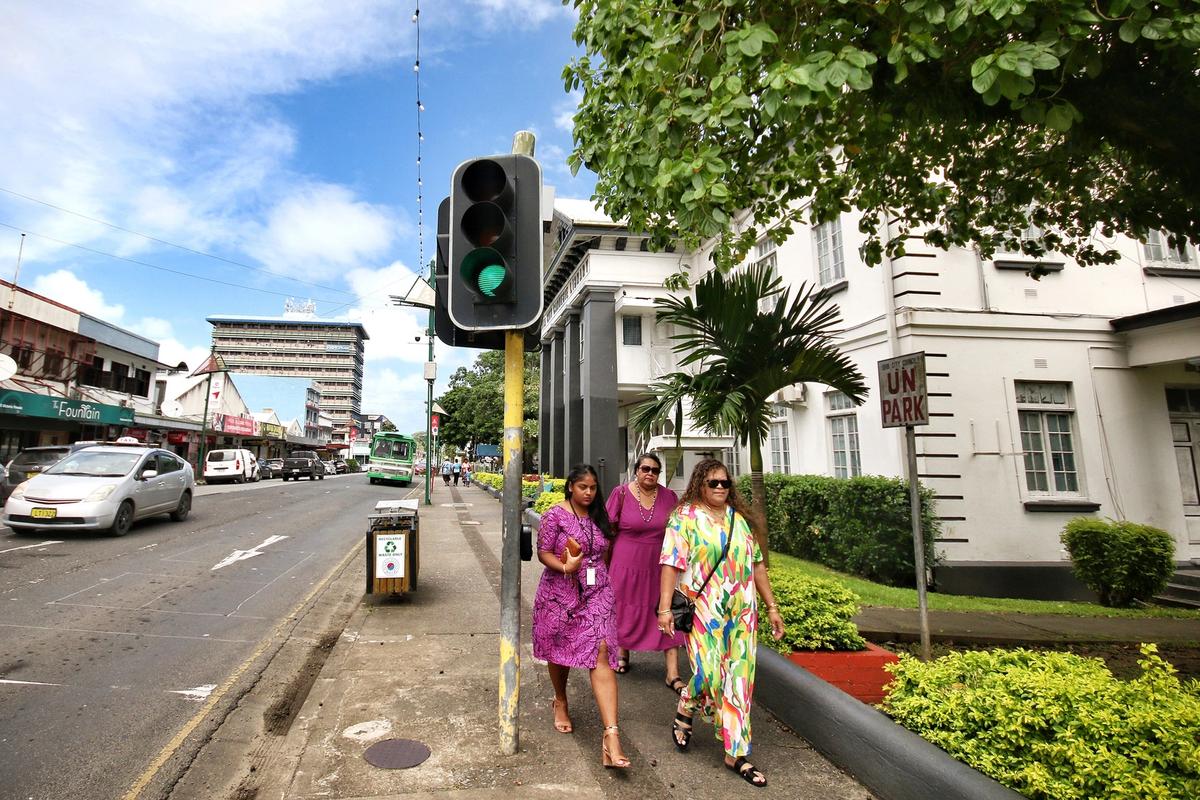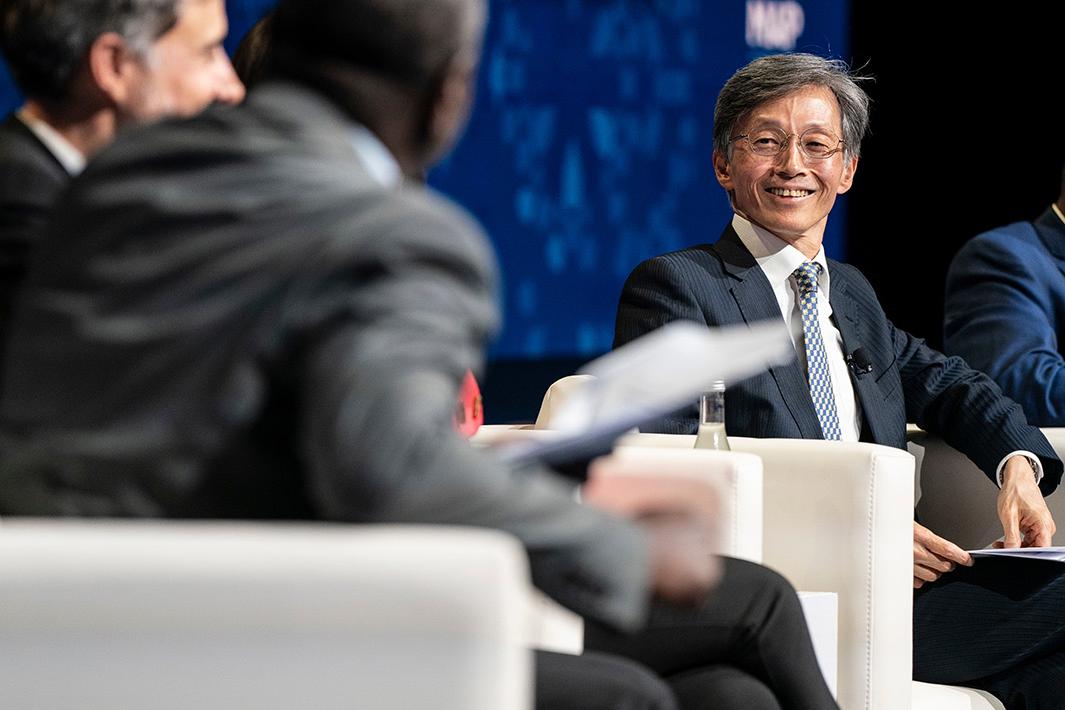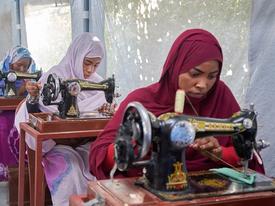Resources

Budget
In April 2023, the Executive Board authorized a gross administrative budget envelope for FY 2024 of $1,808 million, along with indicative budgets for FY 2025 and FY 2026. While continuing a longstanding tradition of fiscal prudence and sustained savings from internal reprioritization, Executive Directors approved the second $29 million tranche of the FY 2023-25 targeted budget augmentation framework to step up the Fund’s work on longer-term global challenges. Under the augmentation, the real net administrative budget is programmed to increase on average by 2 percent each year during this period. The gross administrative budget included $1,411 million in net administrative resources, $250 million in external reimbursements for capacity development activities, $87 million Fund-financed carryforward and $7 million externally financed carryforward. Capital funding of $108 million was approved for use over three years, with the increased allocation reflecting a resumption of facilities-related investments, including hybrid workspace and field-based needs, continued stabilization of information technology investments, and higher cloud costs.
Actual expenditures in FY 2024 totaled $1,666 million, or 92 percent of the gross admin budget envelope. Execution rate of the Fund-financed structural net administrative budget stood at 100 percent. Capital expenditures in FY 2024 totaled $110 million including use of previously approved funding. Of this, $49 million was for direct capital spending in facilities and $61 million for IT-intensive expenditures including $42 million in direct costs and $19 million for cloud-related licenses.
The FY 2024 budget was crucial.in the response to multiple shocks and sustained global economic uncertainty, as the Fund expanded its direct country support through tailored policy advice; increased financial operations, including the continued ramp-up in the Resilience and Sustainability Facility operations; and capacity development. The FY 2024 also marked substantial progress in the implementation of the budget augmentation, with deliverables for thesecond year broadly on track across the five IMF strategies for climate change, digital money, fragile and conflict-affected states, macro-financial, and gender equality approved by the Executive Board. The budget also enabled broader modernization of the organization, including on projects related to HR, data, and knowledge management; implementation of recommendations under the Institutional Safeguards Review; and strengthening of the oversight and risk management functions.
In April 2024, the Executive Board authorized a gross administrative budget envelope budget for FY 2025 of $1,925 million, along with indicative budgets for FY 2026 and FY 2027, noting a complex global environment with slow and uneven growth, increased fragmentation, deepening divergence, and still-high interest rates despite easing inflationary pressures, with a final $30 million augmentation tranche. The FY 2025 budget also includes a net $9 million for a one-off increase to the budget of the Executive Board to restore staffing levels to those before the 2008 downsizing, support the creation of a 25th Chair, and address broader work pressures, after incorporating internal savings.
Table 3.1
Administrative and Capital Budget Envelopes, FY 2023-25
(Millions of US dollars, unless noted otherwise)
| FY23 Total Budget | FY23 Outturn | FY24 Structural | FY24 Temporary | FY24 Total Budget | FY24 Outturn | FY25 Total Budget | |
|---|---|---|---|---|---|---|---|
| Gross Fund Financed | 1,432 | 1,327 | 1,455 | 95 | 1,551 | 1,450 | 1,642 |
| Net administrative budget | 1,295 | 1,294 | 1,411 | - | 1,411 | 1,410 | 1,501 |
| o/w FY augmentation | 23 | - | 29 | - | 29 | - | 30 |
| o/w OED budget increase | - | - | - | - | - | - | 9 |
| o/w Annual Meetings | - | - | 7 | - | 7 | 7 | - |
| General Receipts¹ | 36 | 33 | 44 | -1 | 44 | 40 | 48 |
| Carryforward and Other | 102 | - | - | 96 | 96 | - | 94 |
| Gross Externally Financed² | 236 | 195 | 250 | 7 | 257 | 216 | 283 |
| Receipts (largely CD-related) | 230 | 195 | 250 | - | 250 | 219 | 276 |
| Carryforward (limit) | 6 | - | - | 7 | 7 | - | 8 |
| Gross Administrative Envelope | 1,668 | 1,522 | 1,706 | 102 | 1,808 | 1,666 | 1,925 |
| Capital³ | 78 | 96 | 108 | - | 108 | 110 | 122 |
| Facilities | 19 | 38 | - | - | 47 | 49 | 54 |
| IT Intensive - Direct | 44 | 45 | - | - | 41 | 42 | 45 |
| IT Intensive - Cloud Capital Equivalent | 15 | 13 | - | - | 20 | 19 | 23 |
| Carryforward | 93 | - | - | 87 | 87 | - | 79 |
Source: IMF, Office of Budget and Planning.
Note: OED = Office of Executive Directors; o/w = of which.
¹ Excludes externally financed receipts.
² The difference between FY24 IMF02 (externally funded) spending and receipts is driven by use of standard cost for calculating long-term expert benefits spending.
³ Reflects three-year funding availability.
Income Model, Charges, Remuneration, Burden Sharing, and Total Comprehensive Income
Income Model
The IMF generates income primarily through its lending and investing activities (see Figure 3.1). Lending income is derived from the charges levied on the use of credit from the General Resources Account (GRA), service charges, and commitment fees. In addition, the use of IMF credit is subject to surcharges under certain circumstances, as noted in Part 2. The IMF’s income model also relies on investment income generated from assets in the Fixed-Income and Endowment Sub accounts of the IMF’s Investment Account and from reimbursements. Given the public nature of the funds, the IMF’s investment policy includes, among other things, a careful assessment of acceptable levels of risk, as well as safeguards to minimize actual or perceived conflicts of interest. In January 2022, the Executive Board approved an updated investment strategy, which includes responsible-investing principles related to environmental, social, and governance considerations. These principles were implemented in FY 2023.
Figure 3.1
IMF Income Model
Interest received (charges)
Investment account
Cost recovery for concessional lending
INCOME
Interest paid (remuneration)
Administrative expenses
Reserve accumulation
Dividends to members¹
Source: IMF, Finance Department.
Note: Areas outlined in green represent elements added to the income model in 2008. The new income model envisioned that if the IMF's precautionary balances are considered to be fully adequate, it would be appropriate for the Executive Board to consider making dividend payments to members.
¹As of April 30, 2024, the membership had not adopted the dividend policy.
Charges
Reflecting high levels of lending activity, the IMF’s main source of income continues to be charges levied on outstanding credit. The basic rate of charge (that is, the interest rate) on IMF financing comprises the special drawing right (SDR) interest rate plus a fixed margin expressed in basis points, as discussed in Part 2.
The IMF also levies surcharges on large amounts of credit that exceed a defined threshold relative to a member’s quota (level-based surcharges), and they are higher when this threshold has been exceeded for a defined period of time (time-based surcharges) (see Table 2.1).
In April 2024, the Executive Board agreed to keep the margin for the rate of charge at 100 basis points until the completion of the review of surcharges, but no later than April 30, 2025, at which time the Board would set the margin for the rest of FY 2025 and FY 2026.
In addition to charges and surcharges, the IMF levies service charges, commitment fees, and special charges. A service charge of 0.5 percent is levied on each drawing from the GRA. A commitment fee is charged at the beginning of each 12-month period on amounts available for drawing under GRA arrangements during that period. The fee is refundable (except in the case of arrangements under the Short-Term Liquidity Line, for which the fee is nonrefundable) once a drawing takes place. The IMF also levies special charges on charges that are past due, but only for the first six months a member is in arrears.
Remuneration and Interest on Borrowing
On the expenditure side, the IMF pays interest (remuneration) to members on their creditor positions in the GRA (known as “remunerated reserve tranche positions”). The basic rate of remuneration is equal to the SDR interest rate. The IMF also pays interest at the SDR interest rate on outstanding borrowing under the New Arrangements to Borrow (see “Financing”).
Burden Sharing
The rates of charge and remuneration can be adjusted under a burden-sharing mechanism that distributes the cost of overdue financial obligations equally between debtor and creditor members.

Total Comprehensive Income
The IMF’s total comprehensive income in FY 2024 was SDR 3.0 billion ($4.0 billion), reflecting primarily income from the high levels of lending activity, investment income, and gains and losses stemming from the remeasurement of the assets and liabilities of the IMF’s employee benefit plans, in accordance with International Financial Reporting Standards (International Accounting Standard 19, “Employee Benefits”).
Arrears to the IMF
Since June 2021, when Sudan cleared its arrears to the IMF, the IMF has had no remaining cases of protracted arrears. To prevent and resolve arrears, the IMF has in place a strengthened cooperative strategy on arrears. This strategy consists of three elements: prevention, intensified collaboration, and remedial measures. Prevention is the first line of defense against the emergence of new cases of arrears and includes, among other things, IMF surveillance of members’ economic policies, policy conditionality attached to the use of IMF resources, assessment of members’ capacity to repay, safeguards assessments of central banks of members receiving IMF resources, and technical assistance by the IMF. Intensified collaboration includes staff-monitored programs to help members in arrears establish a track record on policies and payments, leading to eventual clearance of arrears to the IMF. Last, remedial measures are applied—using an escalating timetable—to members with overdue financial obligations that do not actively cooperate with the IMF to resolve their arrears problems.
Multiple Roles of Quota
Resource Contributions
Quotas determine the maximum amount of financial resources a member is obliged to provide to the IMF.
A Member's Voting Power
Quotas are a key determinant of a member’s voting power in IMF decisions. Each member has one vote per SDR 100,000 of quota plus basic votes (same for all members).
Access to Financing
The maximum amount of financing a member can obtain from the IMF under normal access is based on its quota.
SDR Allocations
Quotas determine a member’s share in a general allocation of SDRs.
Financing
The IMF provides financing to its members through four channels, all of which serve the common purpose of transferring reserve currencies to member countries: regular (non-concessional) lending from the GRA, concessional lending from the Poverty Reduction and Growth Trust, and longer-term lending from the Resilience and Sustainability Trust (all discussed in Part 2), as well as via the SDR Department, through which members can exchange their SDR holdings for reserve currencies.
The most salient feature of the IMF’s financial structure is that it is continuously evolving. The IMF has introduced and refined a variety of lending facilities and policies over the years to address changing conditions in the global economy and the specific needs and circumstances of its members.

Quotas: Where the IMF Gets Its Money
The IMF’s 191 member countries provide resources for loans primarily through their payment of quotas, which, together with basic votes, also determine their voting power. Multilateral borrowing and bilateral borrowing arrangements serve as second and third lines of defense in times of crisis. These resources give the IMF access to about $1 trillion in non-concessional lending firepower to support members. Concessional lending, affordable long-term financing for longer-term structural challenges, and debt relief for low-income countries are financed through separate contribution-based trust funds.
Each member is assigned a quota based broadly on its position in the world economy. IMF quotas total SDR 476 billion (about $627 billion).¹ The value of the SDR, the IMF’s unit of account, is based on a basket of currencies (see “Special Drawing Rights” section).
IMF quotas are also reviewed regularly, at intervals of not more than five years.
On November 7, 2023, the Executive Board proposed to the Board of Governors a 50 percent increase allocated to members in proportion to their current quotas. On December 15, 2023, the Board of Governors concluded the16th General Review of Quotas (16th Review) and approved the proposed 50 percent increase of IMF members’ quotas (SDR 238.6 billion, or $314 billion), which will bring total quotas to SDR 715.7 billion ($943 billion).
The Board of Governors resolution on the completion of the 16th Review requested a rollback of credit arrangements under the NAB in an aggregate amount that would maintain the lending capacity of the IMF when the quota increases of 50 percent become effective and that takes into account the expiration of the bilateral borrowing agreements (BBAs). The resolution set two general effectiveness conditions for the quota increases under the 16th Review:
- The first condition is that no quota increase under the 16th Review can become effective unless members having not less than 85 percent of total quotas on November 7, 2023, have consented in writing to the increases in their quotas. The resolution sets the deadline for the IMF to receive members’ consents as November 15, 2024. The Executive Board may extend this deadline as it may determine.
- The second condition is that no quota increase under the 16th Review can become effective unless participants in the NAB have provided the consents necessary for the effectiveness of the NAB rollback.
Once these general effectiveness conditions are met, a member’s quota increase will be in effect once that member has consented to, and paid for, its quota increase.
When implemented, the increase in quotas will strengthen the quota-based nature of the IMF by reducing the reliance on borrowing. The changes in the composition of lending capacity will ensure the primary role of quotas in the IMF’s lending capacity to help safeguard global financial stability and respond to members’ needs in an uncertain and shock-prone world.
¹ Two member countries, Eritrea and Syria, have not yet consented to their proposed quota increases under the 14th General Review of Quotas. Once these countries consent to, and pay for, their respective quota increases, IMF quotas will total SDR 477 billion.

Quota Payments
The conditions for implementing the doubling of quotas approved under the 14th General Review from about SDR 238.5 billion (about $314 billion) to SDR 477 billion (about $629 billion) were met on January 26, 2016. As of April 30, 2024, all but 2 of the 191 members had made their quota payments, accounting for more than 99 percent of the total quota increases, and total quotas stood at SDR 476 billion (about $627 billion).
Borrowing by the IMF
As noted, the IMF is a quota-based institution. However, borrowed resources continue to play a key role in supplementing quota resources through the NAB and the BBAs, serving respectively as a second and third line of defense after quotas.
The NAB is a set of credit arrangements with 40 participants, currently contributing an aggregate amount of SDR 364 billion. Once the 16th General Review of Quotas takes effect, the aggregate size of the NAB will be reduced to about SDR 303 billion. The current NAB period is set through the end of 2025. NAB resources can be activated when the IMF’s resources need to be supplemented to forestall or cope with an impairment of the international monetary system. Activation requires the consent of participants representing 85 percent of total credit arrangements of participants eligible to vote, as well as the approval of the Executive Board. The NAB was activated 10 times between April 2011 and February 2016, the most recent activation.
As noted, BBAs are intended to serve as a third line of defense after quotas and the NAB. The current (2020) round of BBAs has been in effect since January 1, 2021, with an initial term through December 31, 2023. Following an Executive Board decision in May 2023 and subsequent consent from BBA creditors, their terms were extended by one year until December 31, 2024. As of April 30, 2024, 42 bilateral creditors had committed under their 2020 BBAs to provide the IMF with a total credit amount equivalent to about SDR 142 billion. Resources under BBAs can be activated only if the amount of IMF resources otherwise available for financing has fallen below a threshold of SDR 100 billion and either the NAB has been activated or there are no available uncommitted NAB resources. Activation of BBAs requires approval by bilateral creditors representing 85 percent of the total credit amount committed.

Special Drawing Rights
The SDR is an international reserve asset the IMF created in 1969 to supplement its member countries’ official reserves. It serves as the unit of account of the IMF and some other international organizations. The SDR is neither a currency nor a claim on the IMF. Rather, it is a potential claim on the freely usable currencies of IMF members. IMF members that are participants in the SDR Department (currently all members) may exchange SDRs for freely usable currencies.
The SDR’s value is currently based on a basket of five currencies: the US dollar, the euro, the Chinese renminbi, the Japanese yen, and the British pound. The currencies included are reviewed periodically; the most recent review of the valuation of the SDR basket was concluded in May 2022, and the updated basket went into effect August 1, 2022.
As of April 30, 2024, a total of SDR 660.7 billion (equivalent to about $870.8 billion) had been allocated to members, including the August 2021 allocation of SDR 456.5 billion, the largest allocation of SDRs in history, in the context of the COVID-19 pandemic. This SDR allocation provided additional liquidity to the global economic system—supplementing countries’ foreign exchange reserves and reducing their reliance on more expensive domestic or external debt. Countries could choose to use the space provided by the SDR allocation to support their economies and step up the fight against the crisis.
To amplify the benefits of this allocation, the IMF is encouraging voluntary channeling of SDRs from countries with strong external positions to countries most in need. Several members have already lent or pledged to lend their SDRs as loan resources or to generate subsidy contributions to the Poverty Reduction and Growth Trust, which provides concessional loans to low-income countries. Furthermore, the Resilience and Sustainability Trust, which became operational in October 2022, is funded primarily by, and intended to use, channeled SDRs and provides affordable longer-term financing to support RST-eligible countries undertaking reforms to reduce risks, including those related to climate change, and for pandemic preparedness. In addition, the IMF has started discussions on updating its legal infrastructure to allow the use of SDRs for the acquisition of hybrid capital instruments issued by multilateral development banks to boost their development lending capacity.
Continue Reading

Corporate Social Responsibility
Environmental sustainability and philanthropic initiatives are the core of the IMF’s corporate social responsibility program.

Executive Directors & Management Team
The IMF has a management team and 18 departments that carry out its country, policy, analytical, and technical work.
